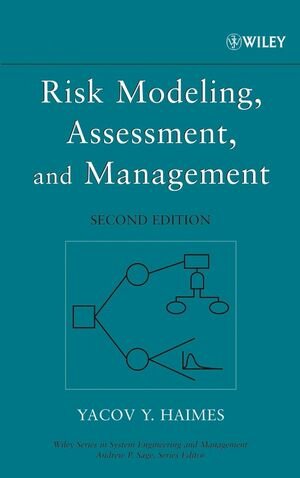
„... a wonderful reference... absolutely necessary for all ofus who teach or apply the techniques and methods of risk.“ (RiskAnalysis, October 2005)
„... should enable students... to be well fortified forapplications once they are on the job. Those beyond that stage canlook upon the book as a comprehensive and sound treatise.“(Journal of Food Quality, October 2004)
„... highly readable... a must for those who want atleast an outline of why politicians and financial advisors are sooften wrong.“ (Measurement & Control, Vol 38 (7), September 2005)
"... can serve as the lead work in graduate business orengineering classes on risk aversion... an excellent reference thatwill come in handy in...[risk management professionals'] dailywork.„ (Quality Progress, February 2005)
“Professor Haimes' book is already a classic and the secondedition is even better. Anyone wishing to make a wise investmentwith almost no risk but huge intellectual dividends, shouldconsider immediately obtaining a copy of this fine book.„(IIE Transactions on Operations Engineering)
“Incorporating real world examples and case studies toillustrate the analytical methods under discussion, the bookpresents basic concepts as well as advanced material, avoidingcomplex mathematics whenever possible.„ (Journal of the AmericanWater Resources Association)
“... this new edition offers an important resource forindustry professionals as well as advanced graduate students insystems engineering." (Zentralblatt MATH, 1105, 85)
Risk Modeling, Assessment, and Management
von Yacov Y. HaimesSince the first edition of Risk Modeling, Assessment, andManagement was published, public interest in the field of riskanalysis has grown astronomically. Its adaptation across manydisciplines and its deployment by industry and government agenciesin decision making has led to an unprecedented development of newtheory, methodology, and practical tools.
The Second Edition of this well-regarded reference describes thestate of the art of risk management and its important applicationsin such areas as engineering, science, manufacturing, business, management, and public policy. The author strikes a balance betweenthe quantitative and the qualitative aspects of risk management, showing clearly how to quantify risk and construct probability inconjunction with real-world decision-making problems. At the sametime, he addresses a host of institutional, organizational, political, and cultural considerations. Incorporating real-worldexamples and case studies to illustrate the analytical methodsunder discussion, the book presents basic concepts as well asadvanced material, avoiding higher mathematics wheneverpossible.
Some key revisions to the Second Edition include:
* A completely updated format with many new examples andproblems
* A new chapter on Risks of Terrorism, including case studies intransportation, water supply, infrastructure interdependencies, food safety, and a National Research Council report onterrorism
* A new chapter on Risk Filtering, Ranking, and Management (RFRM), a technology co-developed by the author and supported by severalcase studies and examples
* A new focus on minimizing the high cost associated with today'smore extensive risk management
Examining timely, multidisciplinary practical applications, thisnew edition offers an important resource for industry professionalsas well as advanced graduate students in systems engineering.



